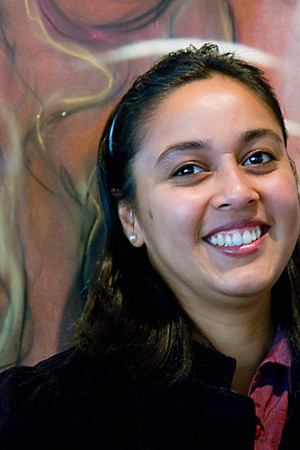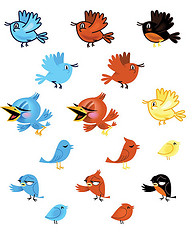
I first wrote this post for the SAS blog Conversations and Connections. SAS has been great to let me repost it here.
Live tweeting offers a great way to stay plugged in to the key happenings around an event both for attendees and for those unable to attend the event physically. Typically, when it comes to large events it’s nearly impossible to hit all the places when there are concurrent presentations or workshops happening at different places. You have to pick and choose and prioritize one over the other. Here’s where live tweeting serves as a great online collaborative platform to catch a glimpse of what is happening on the other side of the hall.
So why would you want to live tweet? Well, your reasons may be multifold but the consequent benefits all drive back to relationship building. Twitter is a wonderful new age tool to create, nurture and build on those relationships. Through live tweeting you may gain new like-minded followers and establish new relationships with them at the conference. It can be your initial step to building on your network and forming new contacts at such events. It further allows for an opportunity of collective learning from each other and strengthening your online identity and reputation.
Live tweeting is very similar to sending a typical tweet that involves sharing timely updates on the twitter stream during an ongoing event, workshop or keynote to reach and engage with a broader audience. Different people follow different tweet styles. Some people like to tweet every event status such as – “Joe speaker just entered the stage.” Others may choose to describe the mood in the room: “Joe speaker addresses a room full of excited attendees cheering him on.” Then there are others that tweet direct quotes from the speakers versus the ones that like to opine or tweet out their own two cents about the speaker and the event. The visual learners may choose to capture moments by uploading and tweeting photos on the fly. While there is no ‘one-tweet-fits-all’ formula, I offer some collective advice to help maximize your twitter experience at large events. Listed in no particular order:
1. Use the official Hashtag: Many events these days promote an official hashtag for the entire conference or even individual breakout sessions. While this might sound like an obvious one, using the hashtag in your tweets helps streamline all connected conversations on that topic making content easily searchable by the users. Here’s an example: Insightful presentation by Joe speaker on the future of Business Analytics #abaws.
2. Reference who you are quoting: If you are quoting or referring someone who you know has a twitter handle make sure you use it by adding the @ followed by their twitter name. For example: @Joespeaker: what’s new with the cloud computing world? It allows for them to engage and participate further in those ongoing conversations.
3. Make it interesting, relevant and resourceful: Just like engaging in any cocktail party, try to ensure that when you speak/ tweet you have something witty, useful or insightful to add to those conversations. Aim to add value when participating. Don’t tweet for the sake of RT’s (retweets). If people find it interesting they will pick it up and spread it on, but that should not be your motivating factor.
4. Listen and engage: Twitter etiquette is very comparable to our physical standards. We try not to interrupt someone when they are talking. No profane language to express our displeasure, or yelling over another person while they are trying to make their point. Why should we behave any differently when it comes to our virtual chats?!
5. Make it conversational: Treat Twitter as a social exchange platform versus a one way channel to push your content. Look out for responses. If people react to your tweets or ask you a question acknowledge it immediately and make it a priority to respond to them. It’s all about creating a dialogue with your audience rather than making it a one-sided broadcast.
6. Lastly but most importantly, be your genuine self: People will naturally gravitate to you online if you show them your natural self. Don’t try to project a side of you that you are not in real life. If you like humor, or are the pensive kinds let that side of you reflect online. Let your tweets be a reflection of who you are in real life, that will make these conversations that much more fun and engaging!
Can you think of other tips or tricks to add to this list? Feel free to respond with your comments.
Until then, happy tweeting!
Related posts –
7 Tips to Live Tweet an Event Effectively
Tips For “Live Tweeting” An Event
How to Live Tweet an Event
Photo by: wissam_ali

Modern English sometimes described as the first global lingua franca used for international businesses continues to be one of the most dominant language spoken across the globe. It has evolved and gone through interesting transitions over the centuries. (Some of the earliest words coined trace back to their ancient Greek and Latin roots.) When I did some preliminary research about this language, I found out that English is a West Germanic language that originated from the Anglo-Frisian dialects brought to Britain by Germanic invaders from various parts of what is now northwest Germany and the Netherlands. What fascinates me further about this language is the flexible and the malleable nature of the English lexicon that has its borrowings from different places and cultures over the years.
There are the fashionable French expressions we all like to use when it comes to food, fashion and travel. Bon appetit literally means good appetite and used commonly to state – enjoy your meal. A la carte (literally means ‘on the menu’ that we often see in restaurants). Café (as in coffee in French or coffee shop that we commonly refer to in English ). Tres chic (literally translates as very stylish). It is used to express ‘stylish’ or ‘smart’ as an element of fashion and the counterpart of posh. Haute couture (literally meaning custom-fitted clothing and typically used to express trend-setting fashion). Adieu (meaning goodbye that we commonly wish each other at the time of farewell). Bon voyage (literally meaning good journey, that has been adopted to express, have a good trip!). And don’t we all know what it means when someone exclaims – c’est la vie! Meaning, such is life! It has evolved to mean things like ‘It is what it is’ and at times used as an expression to say that life is tough but that one must accept it for what it is with an optimistic demeanor.
Then ofcourse there is some of the Asian influence, borrowings from Sanskrit, one of the ancient languages from India that we see being used commonly like Guru (Sanskrit script गुरु, meaning a teacher, as someone we revere and respect for his or her knowledge and wisdom). These days, we use it to describe someone who is an ‘expert in something’ in the modern context. Avatar (अवतार, which means manifestation, and refers to the human incarnation of God per the Hindu mythology.) In modern usage we see it as the graphical representation of a user especially in the social media context. Then ofcourse, most of you are familiar with James Cameron’s Oscar winning movie Avatar in today’s context. Cashmere (originates from Kashmir, the Himalayan region of Northern India where this fine wool is derived from the undercoat of the cashmere goat).
Karma (कर्मा, which means work or fate). We see it being used commonly as bad karma (which refers back to the philosophy of, you reap what you sow). Mantra (from Sanskrit मन्त्र mantra refers to a holy message or text typically used as ‘spiritual chanting’) whereas, in the modern context the English language borrows it to connote what is the code you live by? Such as – what is your life’s mantra? Or in a marketing jargon it could imply the mystical formula to coin their mission statement or as trendy buzzwords for eg: Nike’s mantra is ‘Just Do it’.
We are in an interesting age today where we have not only borrowed from or introduced new words but evolved to a time where 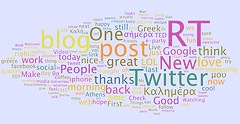 we’ve started ‘verbalizing’ in interesting ways. We’ve come a long way from the Greek and Latin origins of words, and today’s influx of social media has a lot to do with the infiltration of that lexicon. We have not only started using social media terms in our daily dialogues, but have created ‘new verbs’ along the way! Highlighting a few of our common ones.
we’ve started ‘verbalizing’ in interesting ways. We’ve come a long way from the Greek and Latin origins of words, and today’s influx of social media has a lot to do with the infiltration of that lexicon. We have not only started using social media terms in our daily dialogues, but have created ‘new verbs’ along the way! Highlighting a few of our common ones.
Did you google the term? The word ‘Google’ which is the name of a famous search engine, is a play on the number ‘googol‘. A googol is equivalent to a 1 followed by 100 zeros and is indeed an extremely large number. This term reflects the infinite and ever-increasing volume of information that is currently available on the Internet.
I tweeted it to my friends. Twitter (verb) originally is described as – to make high-pitched sounds, as of birds. In the social media age, Twitter today is commonly known as a social networking and microblogging site that enables its users to send and read messages known as tweets. Tweets are text-based posts of up to 140 characters.
You must unfriend him after what happened! In today’s context, it refers to our digital relationships such as our Internet friendships. Unfriending here is to remove from one’s friends list on a social networking site eg: the Facebook friend list.
I blogged about today’s news. Blog is a word that was created from two words: “web log”. It refers to today’s digital diary and serves as a shared on-line journal allowing your voice to be heard and shared with your vast online audience. It empowers users to reflect, share opinions, and discuss varied topics digitally. (E.g. of some of the current blogging platforms -Blogger,Tumblr, WordPress, SquareSpace, Posterous).
I digg it! Unlike the traditional context of digging in your garden, today social media relevancy is all about social news website made for people to discover and share content from anywhere on the Internet. You get to submit the link and users get to vote and comment on submitted links and stories ranking it in popularity!
I like it! ‘Like’ today has a whole new connotation for a Facebook user. Instead of writing a comment for a message or a status update, a Facebook user can click the “Like” button as a quick way to show approval and share the message with others.
She poked me and I poked her back. Poking as we know it typically is seen as an action of tapping and/or softly jabbing another person with the tip of one’s finger or a sharp object. A poke today is a small application on Facebook that are just little reminders or ways to say hello on Facebook.You poke someone if you just want to say a quick hello, want him/her to look at your profile or just letting them know you’re thinking of him/ her.
The list goes on! What are some of the words like this you’ve been using in your daily jargon? Let’s hear it.

Welcome into the New Year! I think this year of 2011 is extra special for us. We’ve all not only sailed through the first decade of 2000, but now steadily climbing into the new decade triumphantly, overcoming our life’s challenges head on. So kudos to that!
The human spirit to me is one of the most enigmatic and powerful sources of energy we’ve been blessed with! It allows us to soar and do things that we never knew we had inside us, or even capable of! But every now and then even that energy needs to rest and recharge (with the only exception being the pink bunny!) Fact is we all tend to get so caught up and wired into our daily lives that sometimes we forget to exhale. Being in the thick of things day in and day out its easy to lose perspective on what we think we are chasing! It’s time to slow down. The age old 17th century proverb by the British historian James Howell holds water even today – All work and no play makes Jack a dull boy!
What better time than the start of the year to reset your body clock and inner rhythm. Do yourself a favor, every now and then take time to detach and unplug yourself from the circuit, from the mundane and shake up that rhythm a bit. There have been positive results showing that just one dose of vacation can release a plethora of side effects. And these are the kinds of side-effects you wouldn’t mind enduring! Slowing your pace, breathing the air deeper, noticing new things, better still seeing the same old things in a new light, finding the humor in everyday life, feeling lighter (cannot guarantee the lbs though!), sounder sleep, fewer worries (atleast momentarily!) and just an overall sense of wellbeing! The list goes on..
Ideally take off physically if you can, a getaway from your typical surroundings. If that’s not feasible take a mental vacation as Dr. Jain suggests and escape from your addictive e-mails, voice mails, text messages, tweets, and wall posts for a few days. For the sublime, a spiritual vacation might be the right fix! A spiritual retreat spending the time in silence, prayer, and meditation. Bottom-line, unplug from the mundane and go get inspired!
A recent trip with my husband on a Southern Caribbean cruise did just the thing for us. I get it now when they say you can find inspiration in the smaller, subtler, finer, and everyday things around you. For me it came from the island locals I interacted with during the travel, the fresh balmy air I got to breathe everyday, island colors and flavors I got to taste, and simply lazing in the pristine beaches under the blue sunny skies with breezing palm trees. It truly has a psychological as well as a physiological effect on you when you allow your senses to feel revitalized and feel the energy gush back in!
I wish you all an energized and rejuvenated start in 2011 and may you find that inner spark and strength to proudly face yet  another year with renewed confidence and strength! Personally, I feel inspired to lead this year living by the motto I saw at St. Kitts – Explore . Feel . Love . Remember!
another year with renewed confidence and strength! Personally, I feel inspired to lead this year living by the motto I saw at St. Kitts – Explore . Feel . Love . Remember!
I hope this year presents us all with the opportunity to explore ourselves deeper, feel the energy that shines within us, an open heart to receive and give back the love we all deserve, and the memory of a lifetime that we can all cherish and remember with our dear ones! Here’s to a fabulous year ahead!
It’s almost end of the year when most of us resolve to shake off our old habits that wear us down and get ready to welcome the New Year with a renewed vigor, fresh goals and zest for life. Not to mention along the way, few of us have been guilty of slapping on layers of baggage onto ourselves due to a myriad factors. But what’s more amusing is how it manifests in different forms for different people such as – deepening worry lines, receding hairline, increasing waistline or depleting cash flow. If you identify yourself as one of them, it’s probably time to detox and revisit your game plan!
You can extend the same philosophy to your social media presence. Having a digital footprint is a good thing these days, but what about the digital dirt we rake in along the process? How do we clean up that? While it might not be possible to erase back all your wrong moves, now might be a good time to reflect back and give your virtual avatars a detox.
Sharing some of my ideas around that -
Reposition your persona – We as people come with myriad emotions and multifarious facets of ourselves that we tend to portray in our everyday lives. Somewhere down the line, it is possible to lose track of who we are or who we ‘want to be’ under all those faces. If you feel that you have derailed from that original path or have lost your initial luster and essence, then it’s probably not a bad idea to pause and reboot your system. Don’t be afraid to start afresh and refocus your energies on where you need to be. Like one block at a time, rebuild or reposition your online persona and reputation one comment, tweet, discussion thread and post at a time. After a point, the current will supersede the old.
Sharpen your message – Are you focusing on the right things that matter the most to you? Do you still stand by what you believed in when you started out? Or do you think you have drifted away from your core beliefs. Do not ever feel pressurized to dilute down on what you originally came forth to say. In the same token don’t get distracted by all the frills and fancy in your simple messaging. It’s never a bad idea to get back to basics and discard any additional unwanted layers. I’m tempted to quote Avinash Kaushik (@avinash) again with “Don’t sexify, simplify!
Be willing to give before you ask – Don’t always hoard onto ideas or resources as your proprietary domain. Enrich it by sharing it with others and gaining back more through crowdsourcing. The more you give to your online community, the more you get back be it in the form of ideas, solutions, fans, followers or friends!
Trust the WYSIWYG effect – What you sow is what you get! (Yeah I tweaked it slightly.) So make sure you are sowing the right seeds in building your reputation. I believe it begins with not just sharing your views but respecting other people’s viewpoints. You need to give respect to earn respect! Don’t be too hung up on your way. There are many different perspectives to looking at the same thing. So allow yourself to be surprised by keeping an open mind. Today’s social media provides that perfect platform in teaching us omnifarious thinking.
I believe Social Media is like good karma, what goes around comes around in leaps and bounds. So make sure you are attracting what you are sending out to your universe whether it’s with your content, comments, friends, family or just pictures.
With that, I’d like to end this year’s last post by sending out my best wishes and warm regards wishing each one of you a very happy and promising New Year in 2011. I thank you all for your comments encouraging me to keep writing and for keeping our dialogues exciting! Until next year…so long!
Photo by Marquette La

Its countdown time come December and typically that time of the year when people look forward to the holidays, start mentally wrapping up this year and gear up excitedly for the new year to come!
I wanted to use this time to reminisce about some of the memorable social media mantras of this year that stayed in my head from gleaning over the myriad social networking sites and blogs. Sharing these with you in no particular order:
“If your product sucks, social media makes it suck harder” - @unmarketing, Scott Stratten
BlogWorld’s opening keynote speaker Scott elaborates – What you see on social media sites is an amplification of your product (be it an actual product you’re selling or just you blog that you’re promoting). If your product sucks, people are likely going to complain. At the very least, people won’t promote you on social media, which is nearly as bad as negative feedback. Make a great product, and social media users will pick up on that and promote it. Again, people spread awesome.
“Make sure you do not create a Facebook strategy; have a strategy that you can apply your Facebook to” - @charleneli, Charlene Li
Charlene Li’s response when asked about where to begin with building a business social media strategy during an open panel discussion at The Premiere Business Leadership Series (PBLS), Las Vegas. It goes back to the age-old adage of, don’t put the cart before the horse. If you do not link what you are doing in social media to your overall business objectives, all is lost. A reminder that social media is merely a tool to be utilized in conjunction with the overarching goal and not to be treated as a solution in itself.
“Don’t ever sell to your audience. Instead, be their gatekeeper” - @chrisbrogan, Chris Brogan & @julien, Julien Smith
And I quote an excerpt from their book Trust Agents: Think of Oprah Winfrey. She gives and gives, constantly, and leverages that goodwill into bigger and bigger guests and giveaways. But does she ever try to sell her audience directly? No, Winfrey leverages her audience to provide visibility: to stars, to movies, to car companies. She protects her audience by guarding them from the bad stuff, and she lets the good stuff pass through, making her audience even happier as a result.
“Think very carefully about what you are measuring if you do measure engagement” - @avinash, Avinash Kaushik
The Analytics evangelist for Google Marketing succinctly and quite simply states in his blog while talking about metrics and engagement, If engagement to you is repeat  visitors by visitors then call it Visit Frequency, don’t call it engagement. Don’t sexify, simplify!
visitors by visitors then call it Visit Frequency, don’t call it engagement. Don’t sexify, simplify! ![]()
Come to think of it, we tend to colorize and layerize (yup, I just coined that word. Poetic license) everything. A simple reminder to get back to basics and more importantly, leave it at that!
I conclude with this quote as my personal favorite, being especially guilty about the exercising part!
“Don’t even try to “find the time to create content and participate in social media.” You’ll fail - @dmscott, David Meerman Scott
Just like “finding the time to exercise” leads to failure and wasted money on health club memberships. Instead, make exercise and social media important parts of your life.
These are just few of the interesting and smirk-provoking quotes that left a ruminating and lasting impression in my head.
What have been some of the poignant wisdoms you’ve heard or came across in your readings this year? Do share!
Photos by Martin Kimeldorf’s Pixel Playground & Wallyg

I start by asking myself this question, especially in light of the fact that I found myself transforming and becoming more of an extrovert, thanks to these new age social tools that allow me to put myself out there with the click of a button. I find myself sharing a lot more of me than I ever did before with a reach that’s capable of touching scores of people through the online medium. Several of the social media networking sites like Facebook, Twitter, LinkedIn, Orkut, Myspace, Flickr, Foursquare, YouTube, Hi5 used across the globe form the gateway for such avenues. The free and swift accessibility of these online tools has made it easy for an average Joe to tap into an audience of scores that was not previously possible.
With the omnipresence of social media, it also brings to the forefront the critical issue of transparency. Everything is shared, liked, voted, and forwarded these days! Pictures of your wedding, video journal of your Europe trip last week, footage of your baby’s first steps, declaration of your new job and title, an aerial view of your new house and your neighborhood..the list goes on!
The point I’m trying to make is, we are living in a day and age where our entire profile and lifestyle is available with the click of a button; a Google search or a Bing away. Far flung from the days where you needed a social security number to get detailed information about a person :)!
Today, you have multiple avenues to get to know a person without even meeting him or her physically. The virtual world is packed with all kinds of data and information. It’s easy to learn about a person’s likes/ dislikes, who are his friends? Where does she live? What did he eat last night? What are their holiday plans this Christmas? What are their kids’ names? What are his New Year goals?
As a global community I believe these social media tools have made our world smaller making our connections tighter. If you think about it, we are all connected to each other with perhaps six degrees of separation. However, on the flip side it comes with the threat of great misuse of personal information and photos. We all need to be responsible and draw our own lines when it comes to the question of how much is too much? Are we overindulging with perhaps sharing way too much of our lives online? What about those who like to share every aspect of their daily lives online with others? Tweeting or perhaps wall posting about when I woke up, what appointments I have for the day, how did my meeting go with that client, what do I feel like eating for lunch, where do I plan to meet my friends over dinner. Do you think we are revealing too much of our selves without deliberating on what the implications of that might be?
As much as we enjoy the privileges of these modern tools we all need to be responsible about the usage and exercise caution and  more importantly use common sense! Adjust your privacy settings on each of these platforms. Do you want your personal information and photos to be visible to everybody or would you rather give access to only your friends? In the same token, each one of us need to use good judgment when it comes to revealing and sharing parts of our private life online. Agreed, this is not a foolproof method to protect your online identity but at least you are not opening the door wide to welcome complete strangers into your house. You are using some discretion and caution.
more importantly use common sense! Adjust your privacy settings on each of these platforms. Do you want your personal information and photos to be visible to everybody or would you rather give access to only your friends? In the same token, each one of us need to use good judgment when it comes to revealing and sharing parts of our private life online. Agreed, this is not a foolproof method to protect your online identity but at least you are not opening the door wide to welcome complete strangers into your house. You are using some discretion and caution.
Another important point I would like you to think about is the image you project on the different social platforms. Just the way you’d intend to ‘position’ a product or a service based on your target audience shouldn’t a similar principle apply to your ‘social audience’? Whether you are on LinkedIn, Twitter, Facebook, Flickr or YouTube identify and recognize the purpose of that medium and segregate accordingly. As authentic and genuine you need to be across these platforms, make it a point to chalk out a line between these tools as they are meant to serve different purposes.
Remember you are the ‘same person’ but there is a subtle difference in the way you’d interact with your family, friends, co-workers, vendors, future employers or neighbors. Each of these circles may get to see a subtle shade of you, so why not use the same principle when it comes to interacting with the same folks online through these different social mediums! Wouldn’t you think?
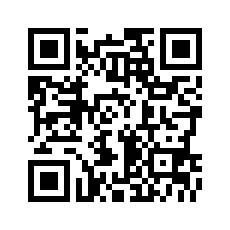
We are finding interesting new ways to hardlink data, making connections from the physical world to the digital world using mobile technology. Quick Response codes aka QR codes are one such innovative tool to help strengthen that connection. The process is easy, users with smart phones + correct reader application can scan the image of the QR Code to display text, contact information, receive a SMS, or open a specific landing page in the phone’s browser.
Although they have been around for nearly two decades (since 1994, originating in Japan by Denso Wave to help track vehicle parts), they have become prevalent in the recent years given the widespread usage of smartphones that have inbuilt QR reader capability if used with the right QR reader app.
What makes QR code interesting and relevant is their widespread (potential) usage in our modern lives. You can create a unique QR code and make it do a number of dynamic things for you, based on your needs. Such as, personal-branding, attach it to your resume or business card and connect it to the ‘About me’ or ‘Contact me’ section of your blog. It could also be used to drive profile information and status updates on your social media handles (LI, FB, Twitter).
Imagine the possibilities if your designer clothes could talk for you! Just scan the embedded QR code on the fabric and find out all about the winter collection along with the catalog listing from the Designer’s website! Wondering what the nutrition value is for a bag of kale you bought the other day, while sifting through your cookbook for a new recipe? Just scan the printed QR code on the package and voila!
Looking to buy a house but don’t have the downtime to make all those physical trips, the QR code printed in the newspaper ads or billboards as you are driving by can make your life simpler. Simply scan the code using your smartphone and get a video tour of the house or neighborhood right at your fingertips. It’s Friday evening, and you are standing outside the movies trying to decide which show to go to? Just scan the poster with the QR code and watch the movie trailer or Director’s cut and pick your show!
While this might sound like a common, mundane lifestyle for the Japanese, the rest of the world is still at different stages of the adoption cycle. It’s not only futuristic in its appeal and 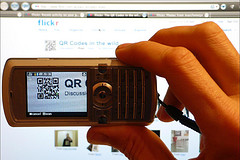 applications but can be a huge global step in our efforts to go green and lean worldwide with less paper consumption!
applications but can be a huge global step in our efforts to go green and lean worldwide with less paper consumption!
The possibilities are limitless with tremendous interactive opportunities in the world of marketing and advertising. Whether you are an established business or just starting out, QR codes can help bridge the gap between the physical world and the virtual one allowing for a richer customer brand experience irrespective of, whether you are physically present at the store or sitting back at the comforts of your house on you smartphone! …Have I gone Matrix on you yet?!
Have you used QR codes? What has been your experience with it?
Photo by CoCreatr

I bet a whole bunch of you sitting out there might rightfully ask, why should I care, or why should I bother myself trying to learn and keep up with all this social media hype and jargon? That maybe a relevant question however I’m not here to change your mindset regarding that. I’m more interested in studying the underlying reasons behind people’s mentality on how they absorb these new social media tools. I’m curious to see what motivates us to join the social media bandwagon? Specifically, what is the thought process behind how an individual or a company at large chooses to adopt the current social media marketing trends?
I tried to analyze this using Everett Rogers’ Diffusion of Innovations Theory. According to Rogers, the diffusion of innovation occurs when the adoption of an idea, practice, or object spreads by communication through a social system. Adoption is similar to diffusion just that it involves the psychological processes an individual goes through, during the decision-making process. Rogers defines several intrinsic characteristics of innovations that influence an individual’s decision to adopt or reject an innovation. This can be compared to give us an insight as to how we are currently adopting the social media.
Similar to adolescent peer pressure do you think as individuals, we feel internally pressurized to join such social media groups? The need to be seen on networking sites like Facebook, LinkedIn, Myspace, Orkut, Hi5; choosing from a vast pool of such social media sites. What propels your decision-making process? Is it the fear or insecurity of being left behind? Is it the need to be included as part of the inner clique being able to comment and ‘like’ the Halloween costume photos shared by your friends last night? As an organization, are you concerned about catching up with your competitors doing the social media thing? Or on the flip side is it about wanting to prove yourself and your organization as an early adopter, and be seen as a thought leader amongst your peers. In both cases, there lies an intrinsic need or desire to prove to yourself or others.
Likewise, on the other side of the bank, for those of you staying abreast of the latest trends and updates in social media, managing anywhere from 5 to 11 social handles, how do ‘you’ perceive a laggard? This is an individual who is probably still stuck with his or her hotmail id and has no clue about YouTube, Facebook or what is a tweet? What opinions do you form about this person? Do they automatically get bracketed into your grandparents’ times?
The rate at which we adopt these innovations over time corresponds with some of the intrinsic characteristics of innovations that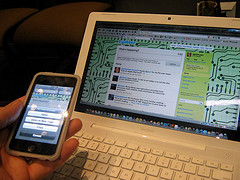 influence an individual’s decision to adopt or reject an innovation. Relative advantage – relates with, is it better than what we had before? How improved is it from what we had? Leading to the question, does social media help us communicate and network more efficiently in real time? If your answer is yes, you’ve crossed this hurdle.
influence an individual’s decision to adopt or reject an innovation. Relative advantage – relates with, is it better than what we had before? How improved is it from what we had? Leading to the question, does social media help us communicate and network more efficiently in real time? If your answer is yes, you’ve crossed this hurdle.
Compatibility is the second characteristic – questioning whether it is compatible with ones values, beliefs, prior ideas, etc? How easily can it be assimilated into an individual’s current life? If it’s a far stretch and if that person does not see the value of sharing his or her personal photos on FB or giving status updates of his/her current location via the Smartphone, the person is less likely to get on a social platform like Facebook for instance. Complexity is the third and a significant factor in influencing – Is it simple and easy to use? Simplicity speeds adoption. The easier the app. the higher the likelihood for a person to download it sooner and use it to keep up with his or her social profiles.
Observability is the fourth factor – That corresponds with the extent to which an innovation is visible to others? Can you see it in action? The more people see the effects of the innovation, the higher the chance of it creating a ripple effect with people creating either more positive or negative reactions about it. Food for thought, when it comes to how a YouTube video becomes a viral video creating either positive or negative reactions around it.
Last but not the least, Trialability determines how can we try it before we buy into it? How much commitment do we have to make in order to use? How much risk (monetary or emotional) is involved in the adoption? If the answer to these questions is positive, the more conducive it is to be adopted. Creating profiles in almost all of the current social platforms like LinkedIn, Facebook, YouTube, Twitter, Orkut etc. is free and quite simple to use. You can choose to abandon these profiles (without any monetary loss) if at any point you find it too difficult to maintain and manage or just fizzle out.
In light of these factors, what do you think motivates or inspires you to join the bandwagon? Where in the adoption cycle do you stand, for the rest of you?
Photos by Chris Radcliff and Plakboek
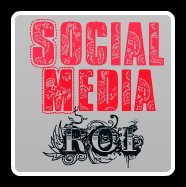
I first wrote this post for the SAS blog Conversations and Connections. SAS has been great to let me repost it here.
With the advent of social media, there has been a lot of chatter about its usefulness as well as many raised eyebrows regarding its benefits. A lot of people are still left wondering, how and why social media is even important and relevant to what they do. Most people who are skeptical about joining the bandwagon want to first know what the ROI will be for investing their time in social media. Is it even worth the time or is it better left to the teenyboppers who pride themselves on updating their social status by the minute!?
I believe social media has something to offer everybody; it depends on how and to what extent you use it. It’s not a one-size-fits-all glove, but really depends on what you make of it and how willing you are to venture into it in the first place.
My personal ROI for investing in social media over the past several months has been very apparent. The most apparent return is that it has led me to a contract job opportunity at SAS. Here’s how social media helped me achieve that.
My initial escapades with social media started at a curiosity level, while I experimented with it on a trial and error basis. The truth is, I’m still exploring, as I still do not know or totally understand the full impact of these social media platforms. I started with what made me comfortable: I created a LinkedIn profile and filled out my background and skill sets. I also made it a point to upload a professional photo. I figured people register things better when they associate a visual against any data. I started building connections and strengthened my network online. This took a considerable amount of time, as I’d spend hours trying to research people and companies I admired and wanted to connect with.
I made it a point to customize my LinkedIn invite, which typically included a very short introduction, what I have in common with the contact, and why I would like to connect with them. I think it was this approach that gave me a better response rate in building new connections. I always tried to keep my end goal in mind, in this case it was building a stronger and richer network of people that I could emulate and learn from in my field of interest.
Twitter gave me the opportunity to follow these people, read what they tweeted about and even engage in those conversations with no strings attached! Twitter, like most social sites is merely a tool created for us to use at our own discretion. Garbage in is garbage out! If you wish to have fruitful and productive conversations, the onus lies on you to follow the right people you’d like to have real and interesting conversations with. Tune out the mindless chatter by creating lists of people you’d like to follow and focus on those.
Beware, though: What may have started as a 10-minute activity can easily turn into a couple of hours online spent toggling between a dozen or more tabs open on your monitor. So always keep track of time and make a hard stop using a timer (if need be) so you don’t go overboard with it. Time management is key here. Brief focused bursts of engagement online on a daily basis helps keep your profile active onscreen.
I tried to mix the old with the new methods of networking. While these tech-savvy social platforms helped give me the initial leverage to connect, I followed through with the old-fashioned way of meeting and greeting over coffee or with an informational meeting. This always helped make the interactions more human aside from our virtual connections. I’m grateful for these opportunities that social media platforms created for me allowing me to make new connections, while preserving old ones, and strengthening my online brand presence through each of these platforms.
While your goals may vary ranging from brand awareness, networking, relationship building, or strengthening customer connections, all it takes is an open mindset, adventurous spirit and the willingness to invest a small portion of your day on these sites, and the ROI can be huge in the long run.
What has been your experience using social media, how has it helped you?
Photo by Keith Burtis




 and font sizes making it easier on the eye to read. Also try not going to verbose on them using long paragraphs (again yawn!) try breaking it down into bite –sized paragraphs.
and font sizes making it easier on the eye to read. Also try not going to verbose on them using long paragraphs (again yawn!) try breaking it down into bite –sized paragraphs.
